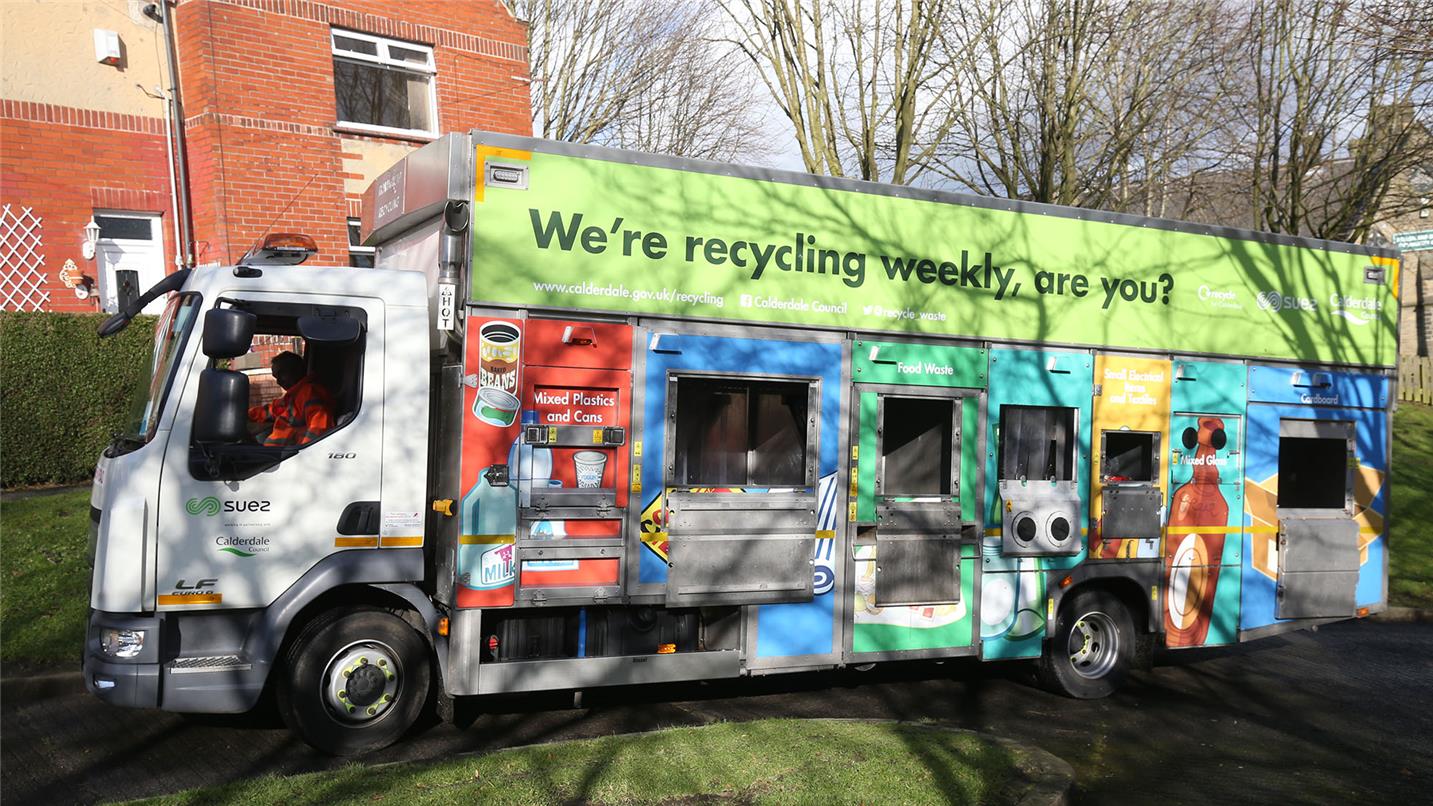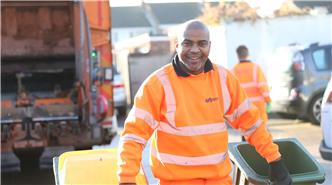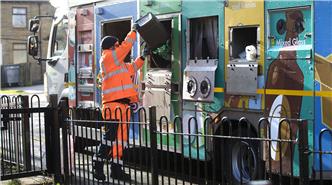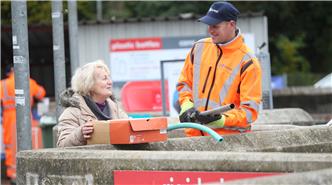The mission
Re-educate residents by targeting their behaviours resulting in contamination with a view to improve the quality and quantity of recycling in Calderdale
Since the dry mixed recycling collections were changed in 2016, the quality and quantity of recycling items collected in the Calderdale area has been declining, mainly due to residents placing items in the wrong containers and high levels of contamination. This impacts the efficiency of the collection crews who sort containers into collection vehicles, as the time it takes crews to complete their rounds increases, so does the costs of the collection operations.
The main goal of the educational programme was to decrease the amount of contaminated materials being presented for collection. In order to reduce the amount of contaminated materials, SUEZ introduced an efficient and effective communication programme that enabled ground crews to encourage the correct behaviours. This in turn enabled the collection crews to respond immediately to incorrect behaviours they were seeing on a daily basis and gave them the opportunity to target those who persisted in incorrectly presenting their recycling with further communications and engagement.
Our solutions
Three-step communication programme designed to educate residents about how to correctly present their recycling containers and why
A three-stage educational communications programme was designed to educate householders in how to correctly present their recycling for collection.
The first step was to ensure that the issue was highlighted to the householder using green education tags attached to the recycling container which was incorrectly presented, or yellow stickers attached to any cardboard presented with polystyrene. Each of these tools detailed why the presented recycling could not be collected, along with what the householder needed to do differently to ensure that their recycling is collected next time, such as:
- how to separate waste into the correct containers.
- ensuring that items are rinsed of residue.
- only recyclable materials are put in the containers.
The tag included a reminder about the entire recycling service to help households understand what items they need to put into each container. Both the tag and sticker included details of the local authority website, to assist residents in finding out more information regarding their recycling services, and how to access more support if necessary.
If the first step did not result in improvement of the quality of the recycling presented from the household, the second step was to arrange for a personalised letter to be sent, which shared messages with residents on the requirements of recycling collections and detailed the reasons why their recycling did not meet these requirements. The letter also explained why maintaining standards for recycling collections is so important to the council and collection service provider, SUEZ. The objective of this step was to share more detail on the importance of material segregation to make residents feel more informed about what material should go in each container, while giving them a more direct instruction to change their behaviour with a personalised communication.
The third step, should it be required, was for a recycling officer to visit the household. This would give an opportunity for discussion supported by examples taken from the households’ recycling items awaiting collection that week. This method gave residents the opportunity to have a personalised, interactive session which looked at their recycling specifically, hoping to remove any uncertainty around recycling, and gave residents the opportunity to ask any questions with an expert on hand to explain.
All three steps of the communications programme were recorded by the crew in the SUEZ collection management system, ‘CLEAR’, which enabled full reporting of the progress made by the educational activities.
The results
Communications programme positively impacts recycling rates in Calderdale
Since the communications programme was introduced 12 months ago, the customer has seen outstanding results and an improved rate of recyclable materials collected across Calderdale, with 84% of residents changing their behaviour after the first step of the improvement plan and 82% after receiving the letter sent as part of step two.
Not only has recycling collection increased by 85 tonnes year on year through reduced contamination, but the collection crews have saved 615 man hours by not having to sort through containers to find the correct items for recycling. This means that the communications programme with educational content has delivered cost savings and improved the overall efficiency of the entire collection service.
The clear structure and three-stage approach to the communications plan enabled all 5,213 households to receive notification of the changes required in a cost effective, timely and manageable way. The process was so effective that only 2.5% of households required all three steps of the process to be completed.



